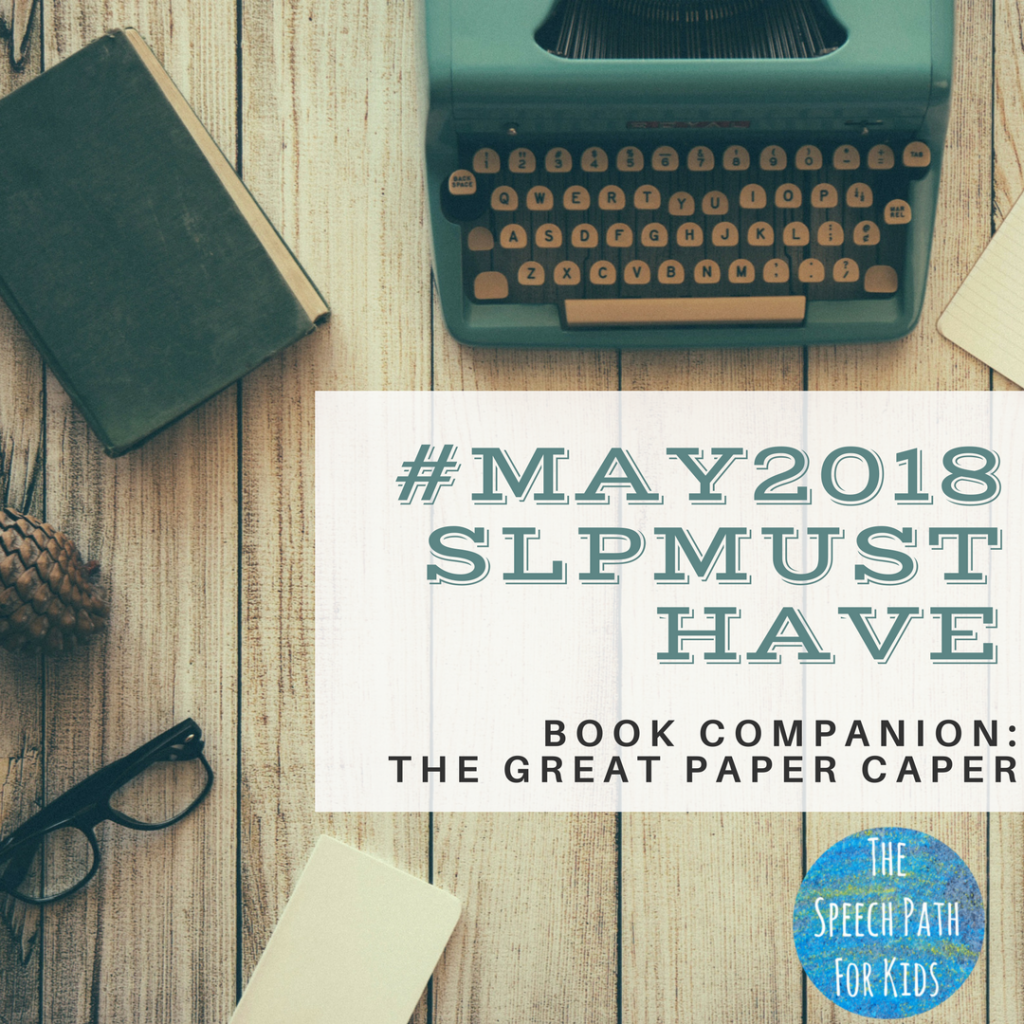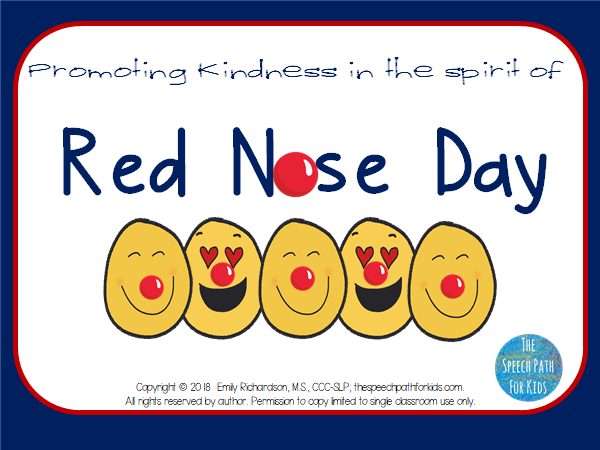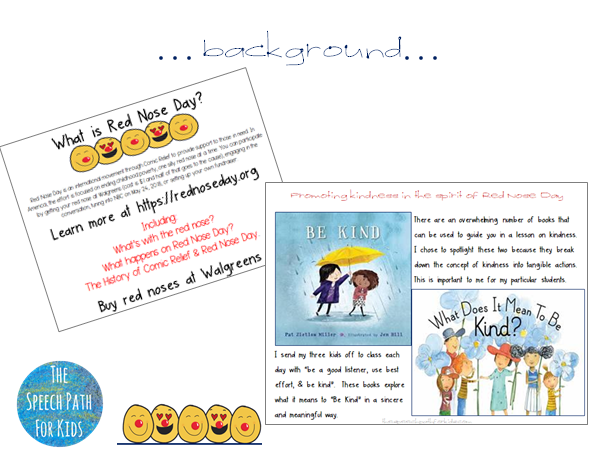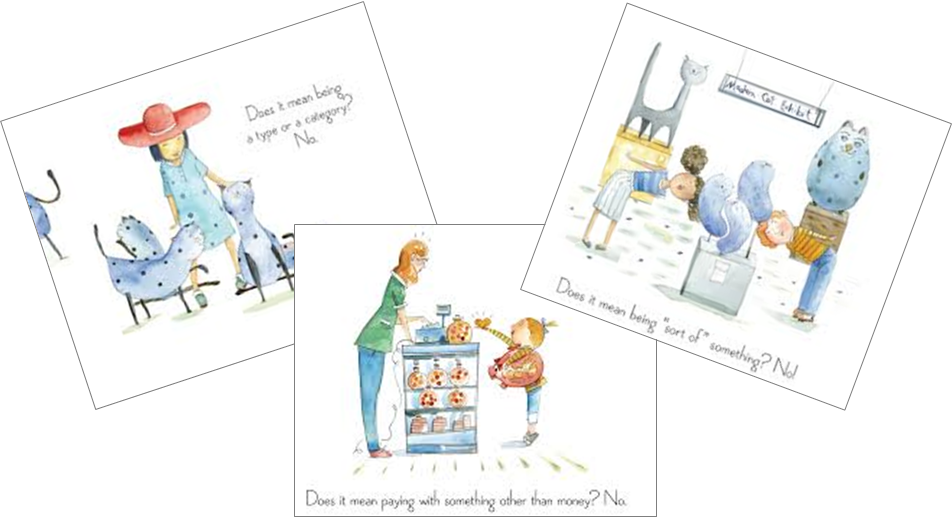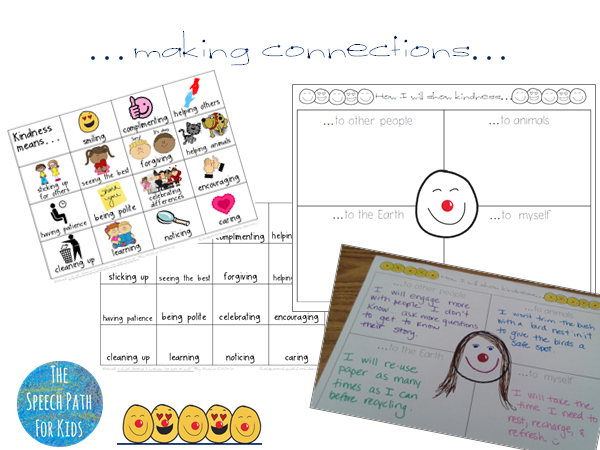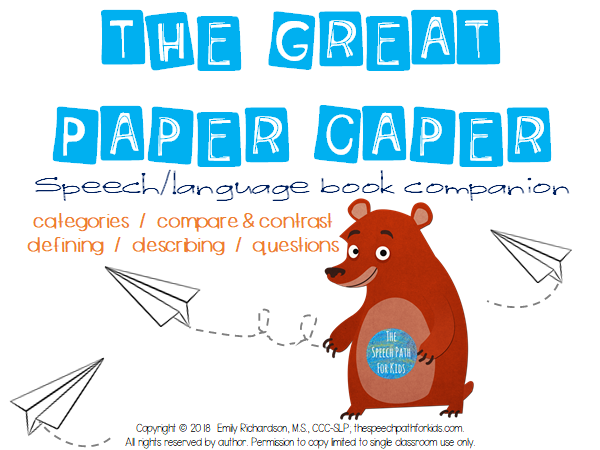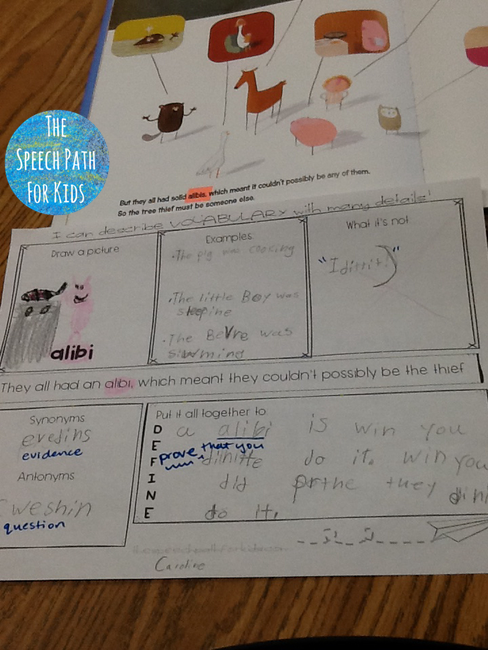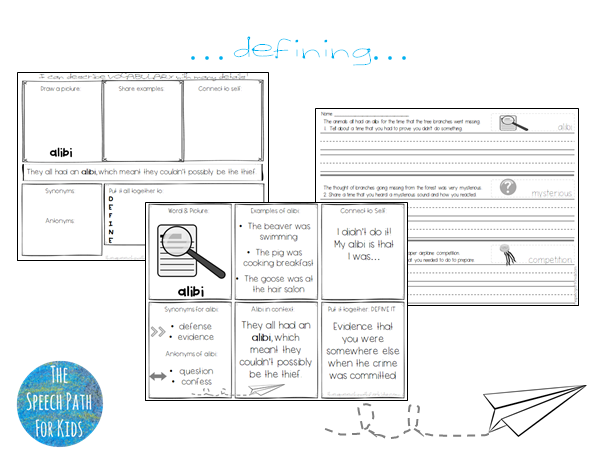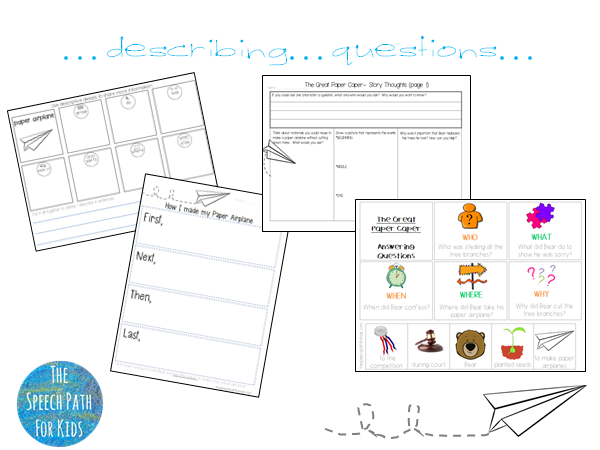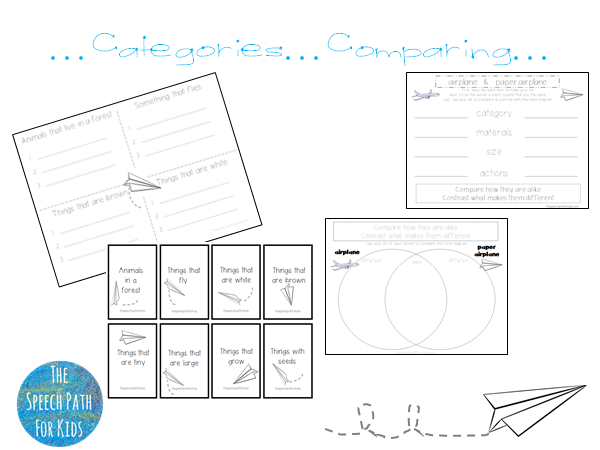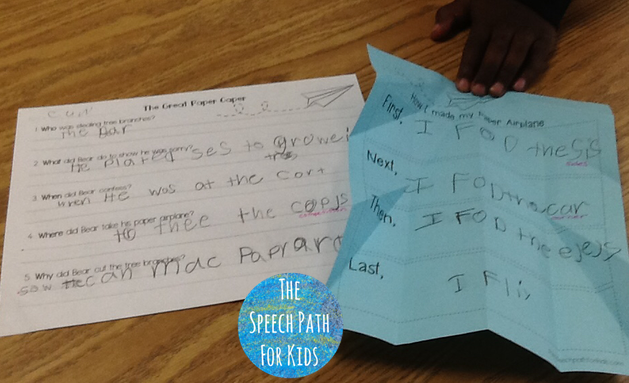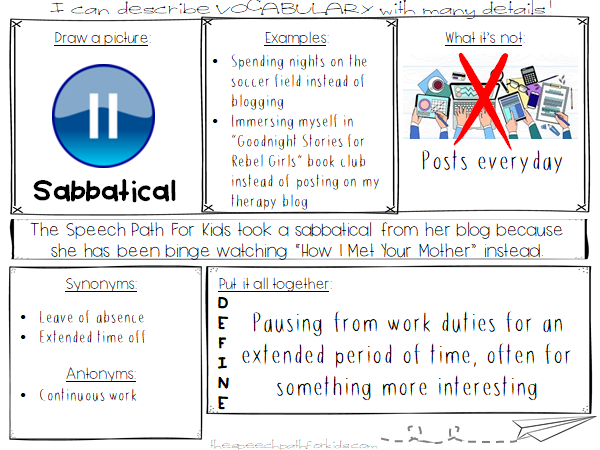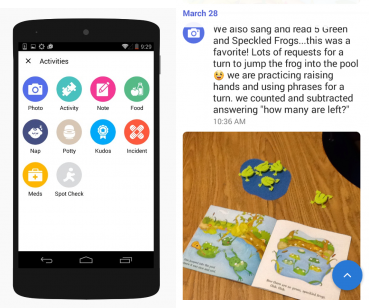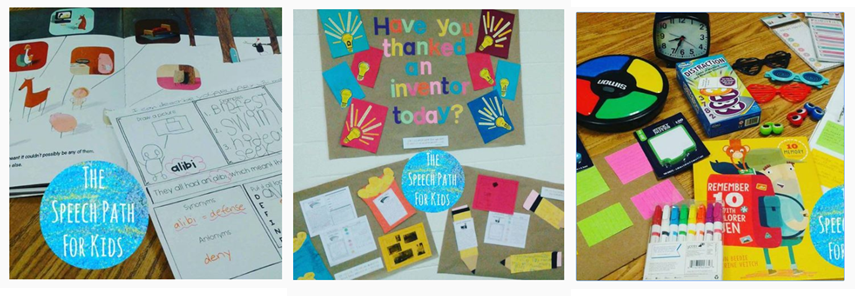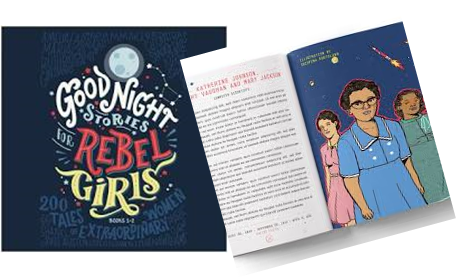One of my favorite things about going to the public library is stumbling across surprise books. I go armed with a list from Instagram or Pinterest and usually I’m lucky to find one or two titles in stock. So I just start browsing…I pick up books next to where my hopeful book should have been, look at the ones that are displayed on the counters, and just grab randomly.
I ran across this book while exploring at the library and instantly knew I had found treasure! It is written and illustrated by two very familiar names: Paul Fleischman and David Roberts. Due to my limited group times with students, I love when I can find books shorter in length that pack a punch with content. As my language students grow into 2nd-5th grade, I try to parallel their curriculum content with skill-based therapy using chapter books. (If you are also on the hunt for manageable chapter books in speech/language therapy or small group sessions check out my novel study units for Freckle Juice and The one In The Middle Is The Green Kangaroo).
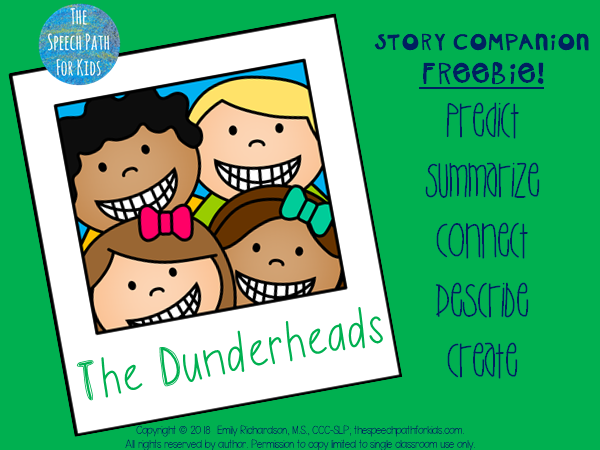
As you know, it could take an entire school year of therapy sessions to make it through one grade level chapter book. So I am always on the look-out for short but rich chapter books. While The Dunderheads isn’t a chapter book, it is a picture book with a longer yet manageable length. This is a cute story about some underdog kids with a plan to outsmart their teacher who is just plain mean. At first glance all I could think about what what a fun lesson in prediction this would be with each character’s nicknames correlating to their hidden talent (Junkyard, Clips, Wheels). Students can engage with the reading of The Dunderheads while practicing skills of prediction, summarizing, sequencing, and describing (just to name a few!).
This FREEBIE book companion includes:
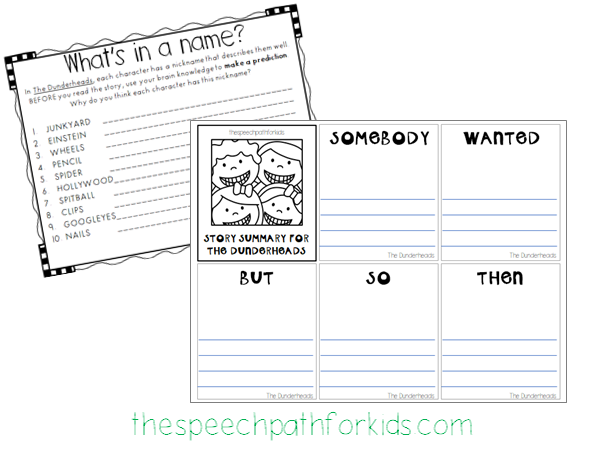
WHAT’S IN A NAME?
Before reading, students will make a prediction about each of the 10 character’s nicknames. This is a great opportunity to discuss predictions and inferences and how sometimes your guess could make complete sense but isn’t the right answer (compared to guesses that don’t use our best reasoning skills). You could even extend the idea of “What’s in a name” by researching the origin and meaning of our own names. Do those characteristics match how we see ourselves?
STORY SUMMARY
Following the familiar script Somebody/wanted/but/so/then students will summarize the story through words and pictures. If you aren’t printing this as a double sided packet, you could have students cut this out to make a sequencing board or story booklet. You could also assign student different characters to summarize the story through their eyes. That makes for a good conversation on perspective taking.
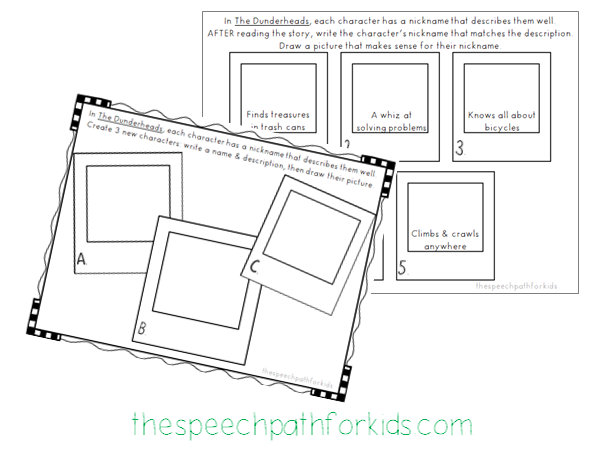
STORY CHARACTERS
In The Dunderheads, each character has a nickname that describes them well. (The narrator is Einstein because he solves problems well, Pencil draws from memory, Hollywood has seen every movie ever made, etc) After reading the story, students can use this 2 page (I copy mine double sided) template to read a description for each character and label with their (nick)name. There is also space for students to draw a picture of the character. (For kids who struggle with this task, I show them my simple stick drawings and they usually outdraw me! I do love providing an outlet in drawing for kids who are comfortable in that form of expression)
CREATE NEW CHARACTERS
Students get to play with creativity here! Using the framework that the author has set out, students get to create 3 new characters with a name, short description, and picture. If support is needed, you could start out creating as a group to provide a model.
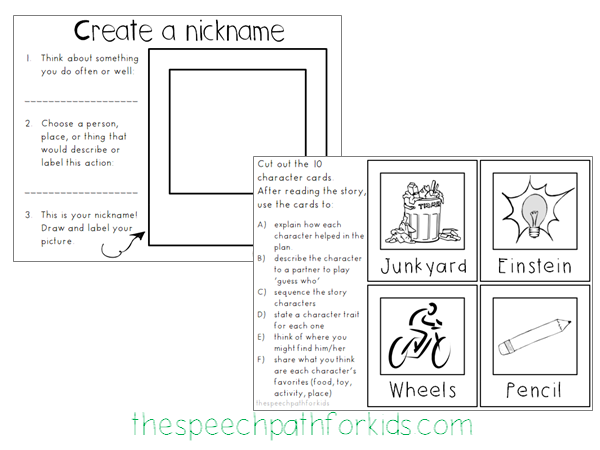
CREATE A NICKNAME
Now students can do a little self-reflection a create a nickname for themselves. The framework is provided for students to write something they do well or often, label that action with a person place or thing, and then draw/label their picture using their self-created nickname. If you are feeling brave, you could always have students use this process to create a nickname for you!
CHARACTER CARDS
Cut out the 10 character cards. After reading the story, a few ideas to use the cards include:
A)explain how each character helped in the plan.B)describe the character to a partner to play ‘guess who’C)sequence the story charactersD)state a character trait for each oneE)think of where you might find him/herF)share what you think are each character’s favorites (food, toy, activity, place)


